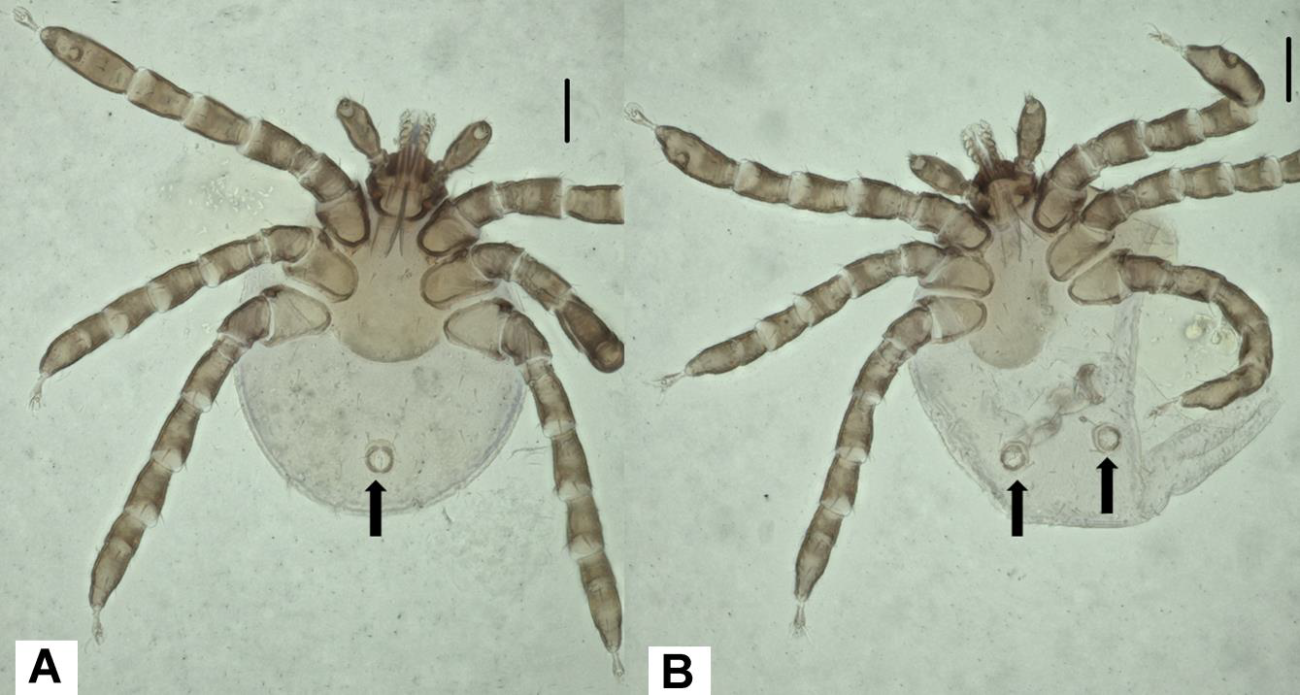
B - individual with morphological anomalies.
The arrow points to the anal pore
During parasitological studies of mites in the nests of swallows (Riparia riparia L., 1758) in the Vladimir region, scientists from the Institute of Ecology and Evolution of the Russian Academy of Sciences noticed that among the 6982 collected larvae of Ixodes lividus Koch, 1844 (Acari: Ixodidae), one was observed with an abnormal appearance and the presence of two anal pores. Thus, only 0.01% of all ticks collected in 2022 had morphological abnormalities.
Teratological changes are a rare phenomenon in ticks. The most common abnormality reported in ticks is gynandromorphism (i.e. individuals have both male and female characteristics). There are also other types of morphological abnormalities, such as asymmetry, bifurcation, fusion of adanal plates and scallops, atrophy or absence of one or two legs.
At the same time, according to the literature, in Ixodes persulcatus (Schulze, 1930), a neighboring species from this genus, which has a normal exoskeleton structure, no more than 3–4 types of pathogenic microorganisms can be simultaneously recorded, which a tick can transmit through a bite, while the individuals with abnormalities often carry 5–7.
This work represents the first study of morphological abnormalities (i.e., teratology) in I. lividus, and the findings are the first for this tick species.
Bykov, Y., Yatsuk, A., Kondratev, E., Porshakov, A., & Matyukhin, A. (2023). Abnormal morphology of a larva Ixodes lividus Koch, 1844 (Acari: Ixodidae). Persian Journal of Acarology, 12(4), 593–597. https://doi.org/10.22073/pja.v12i4.82615
